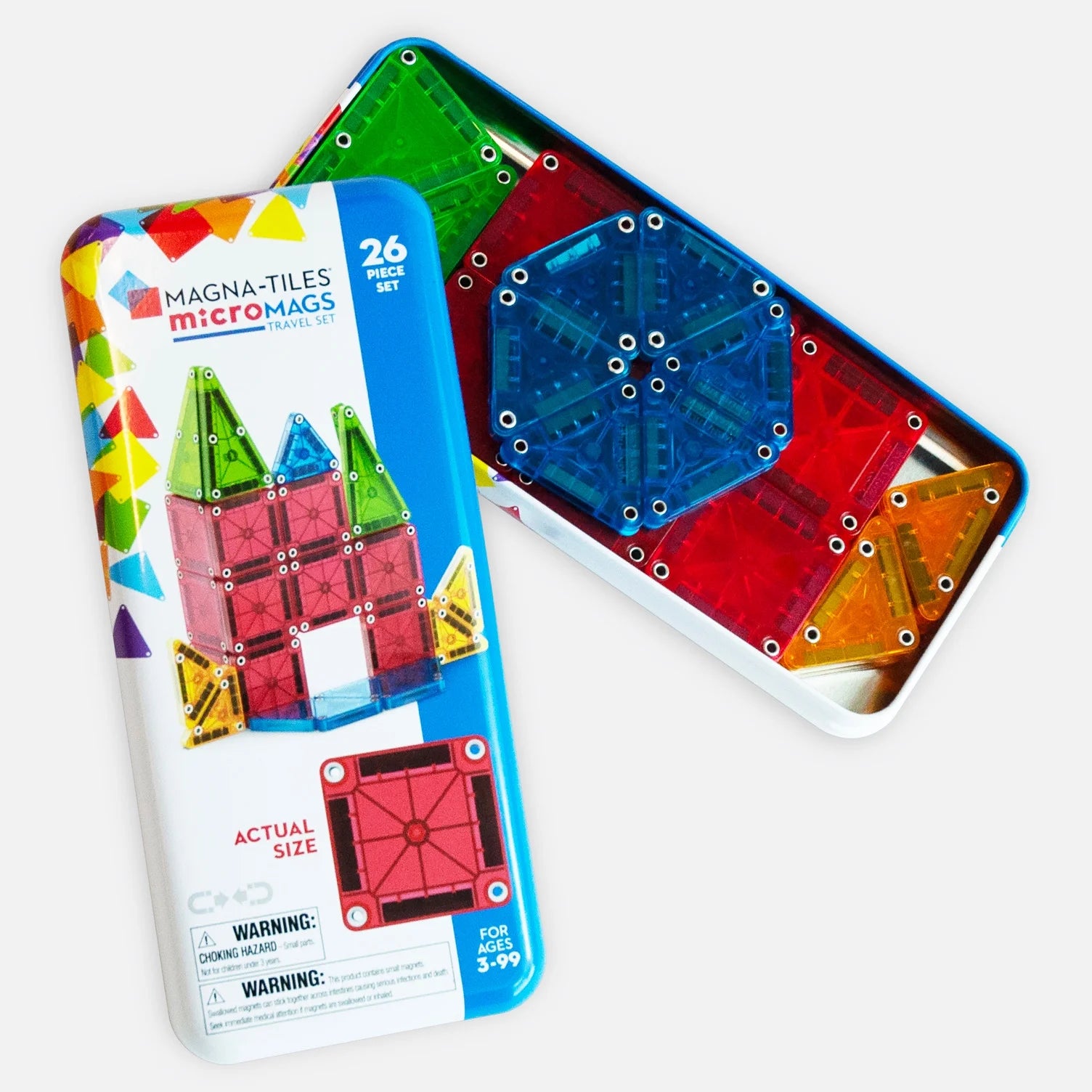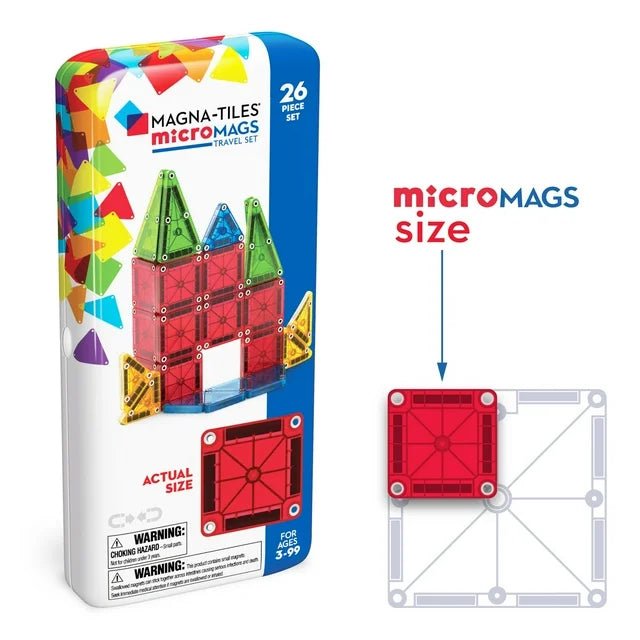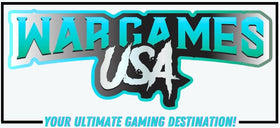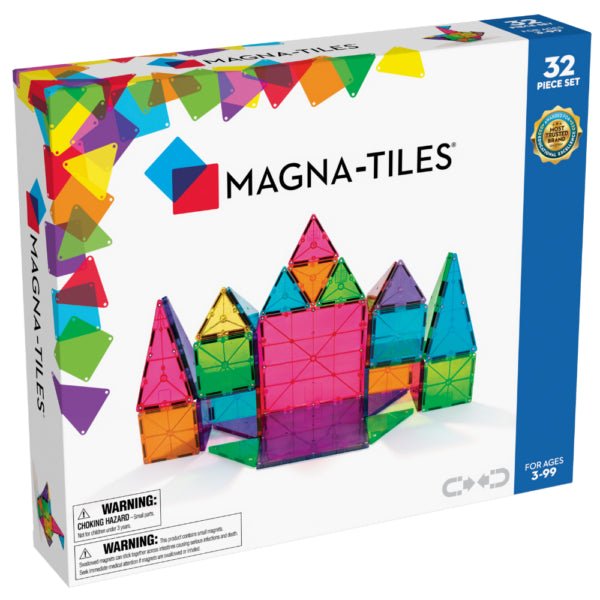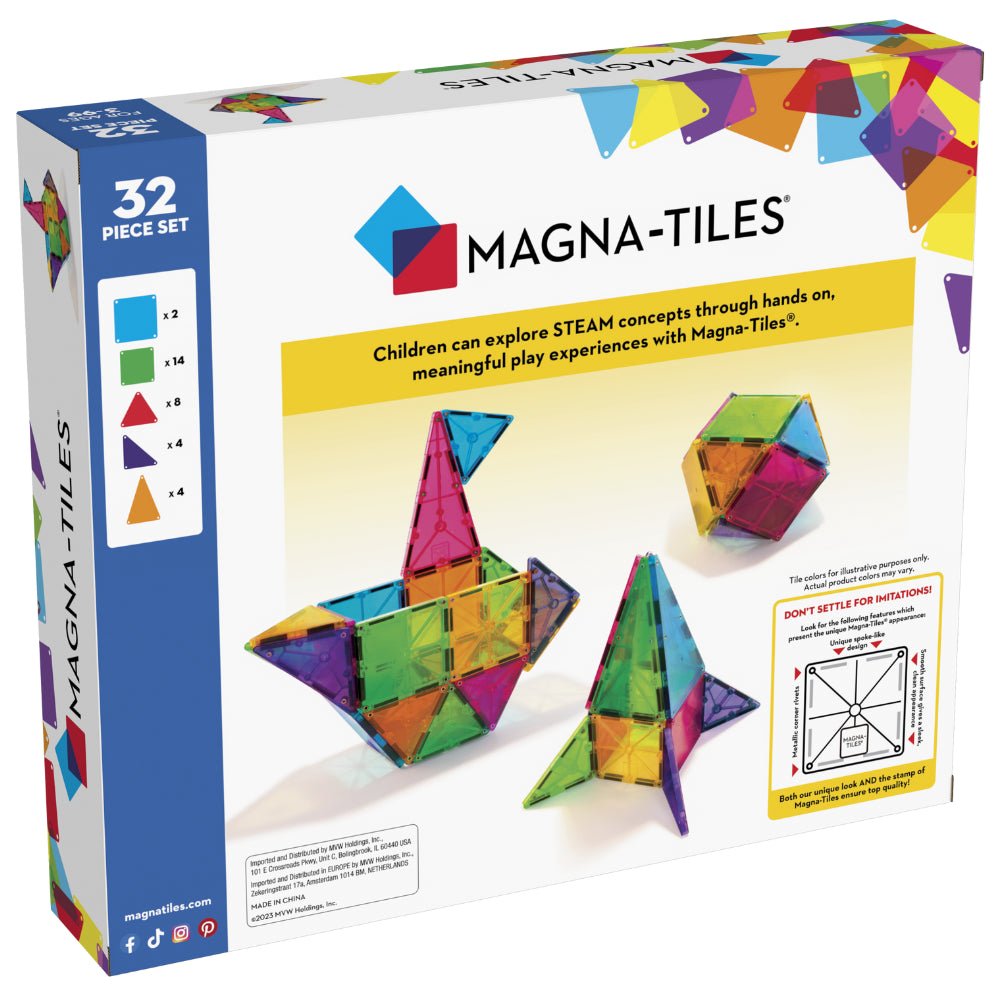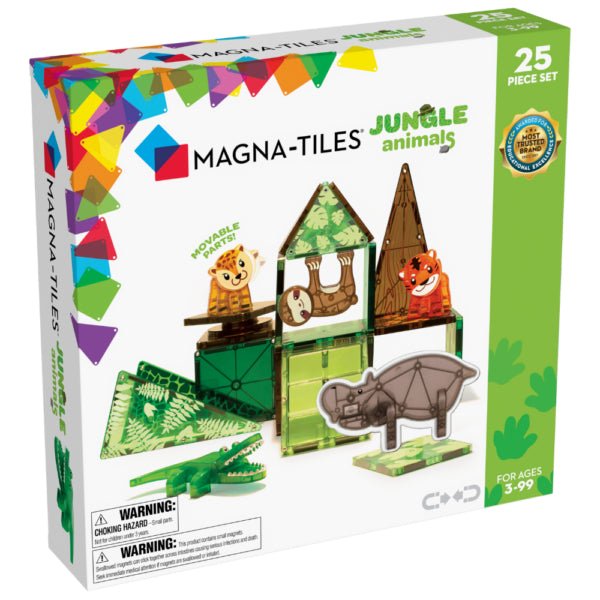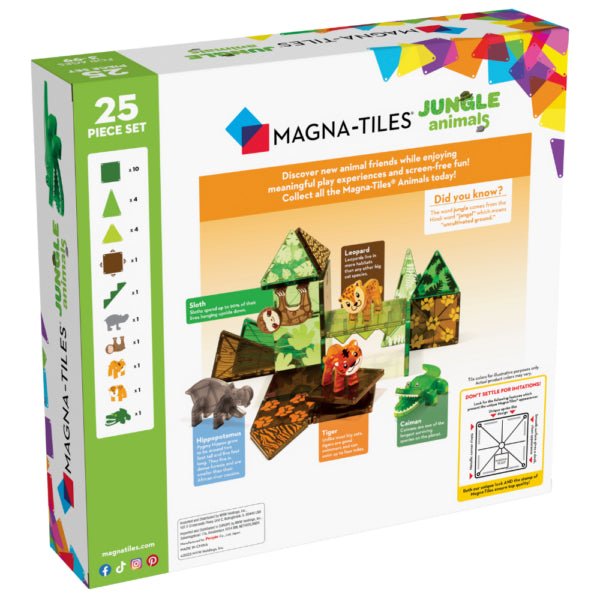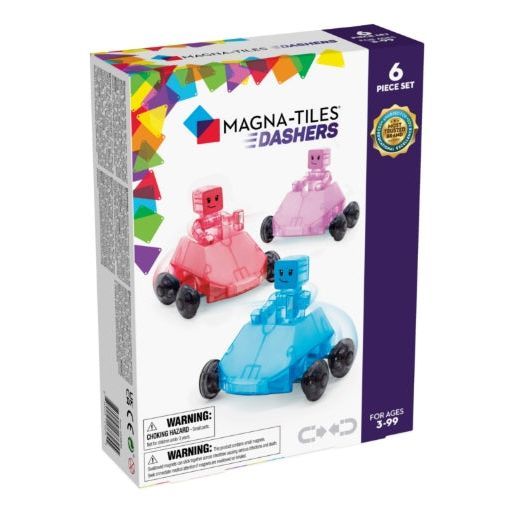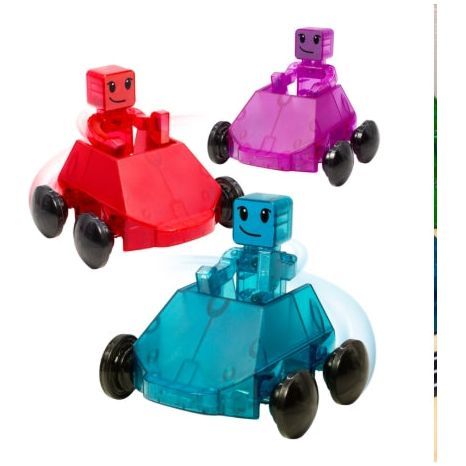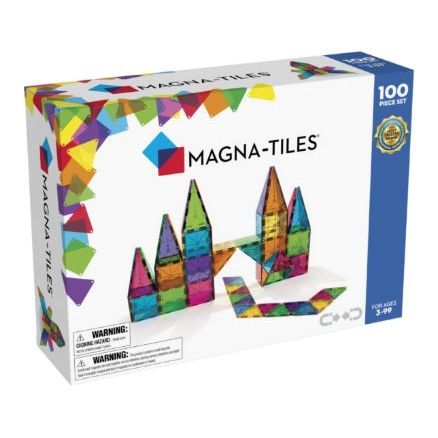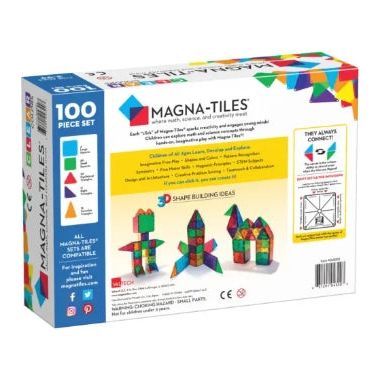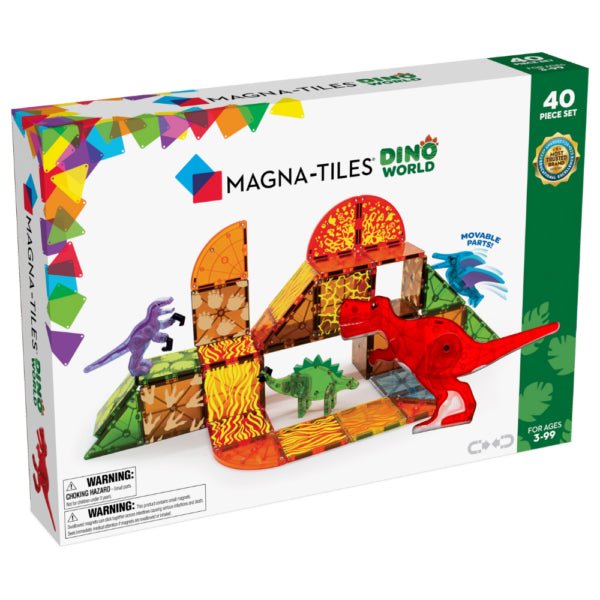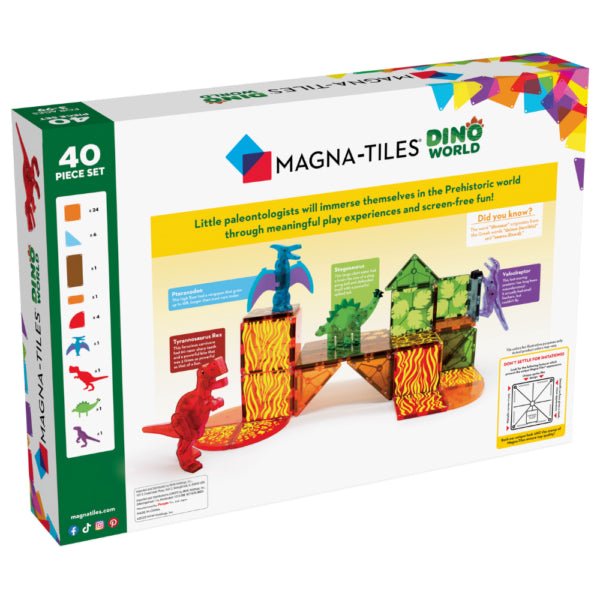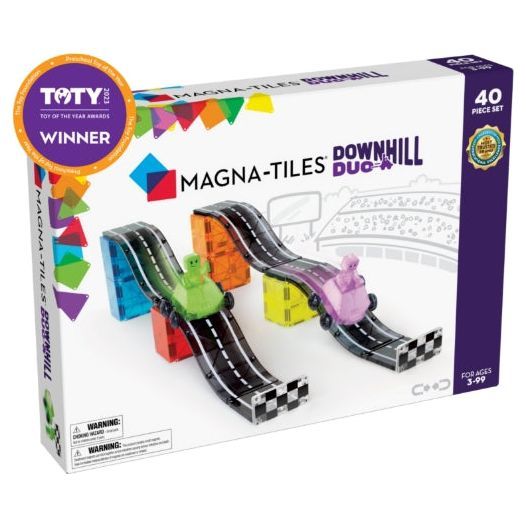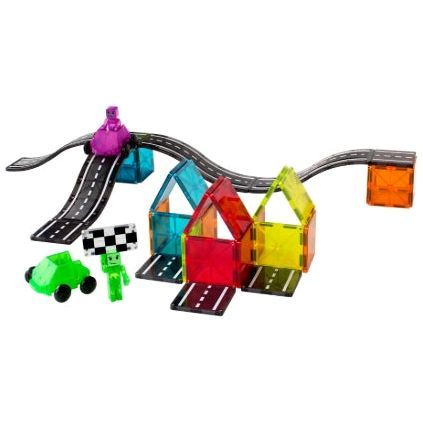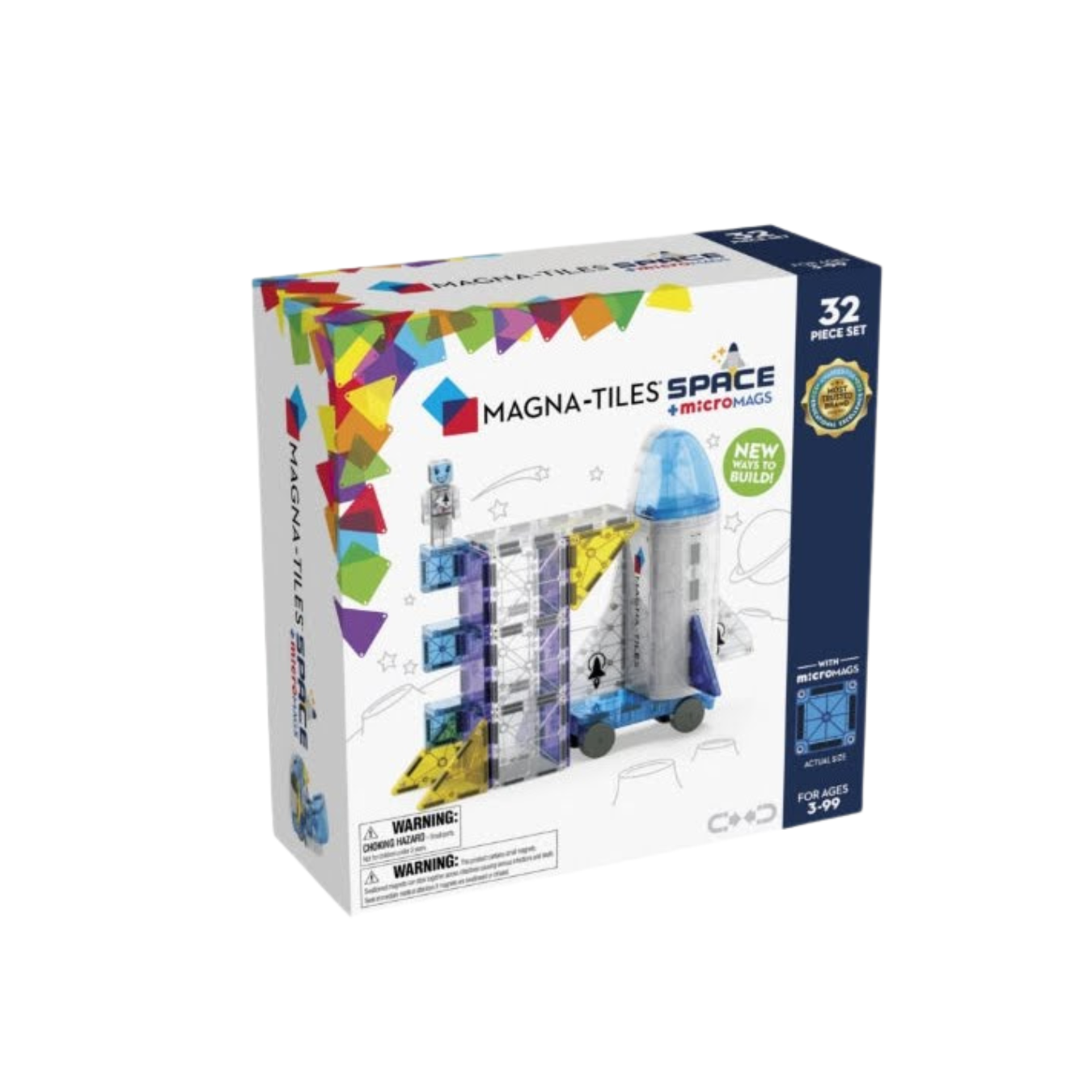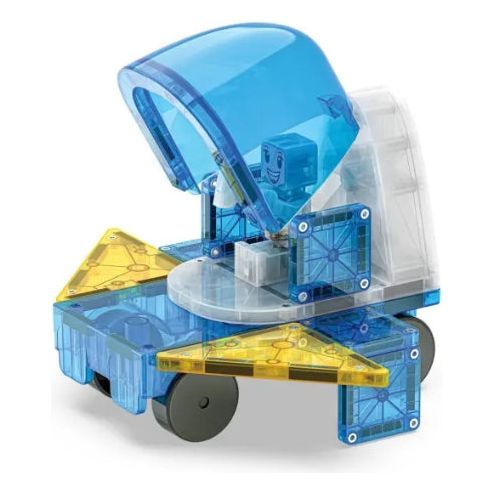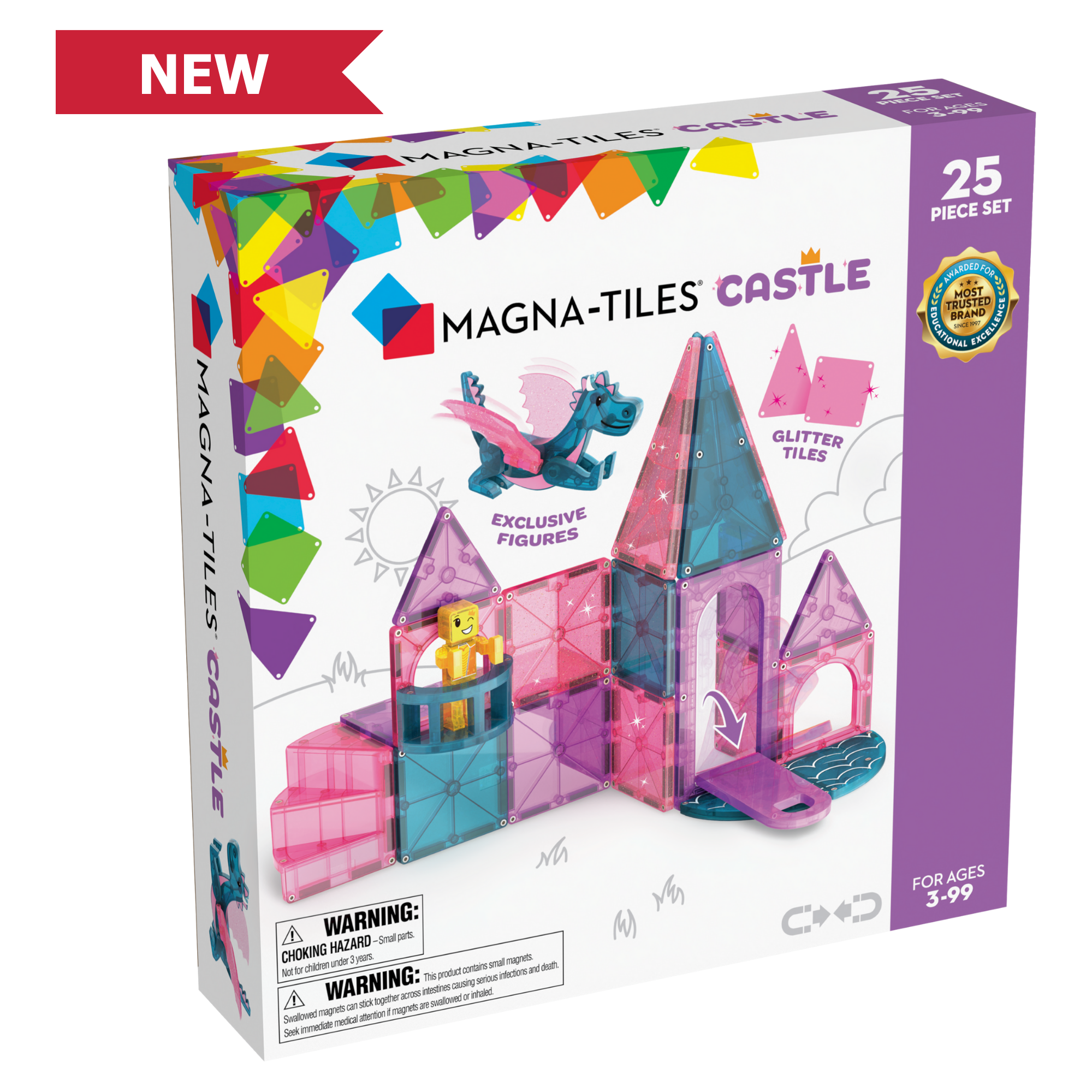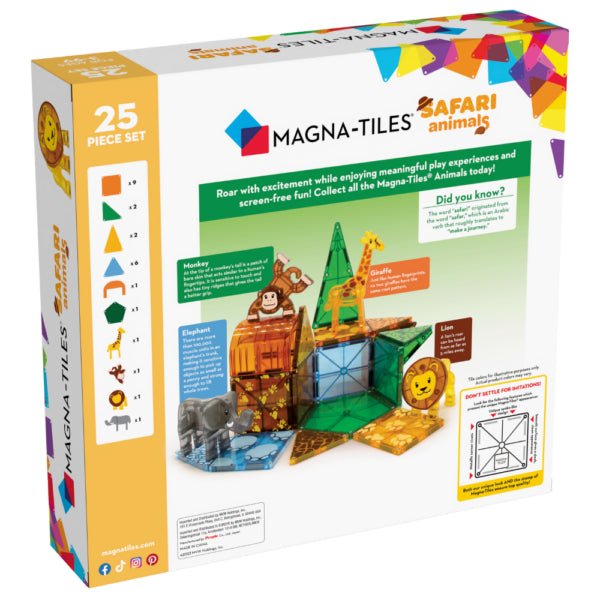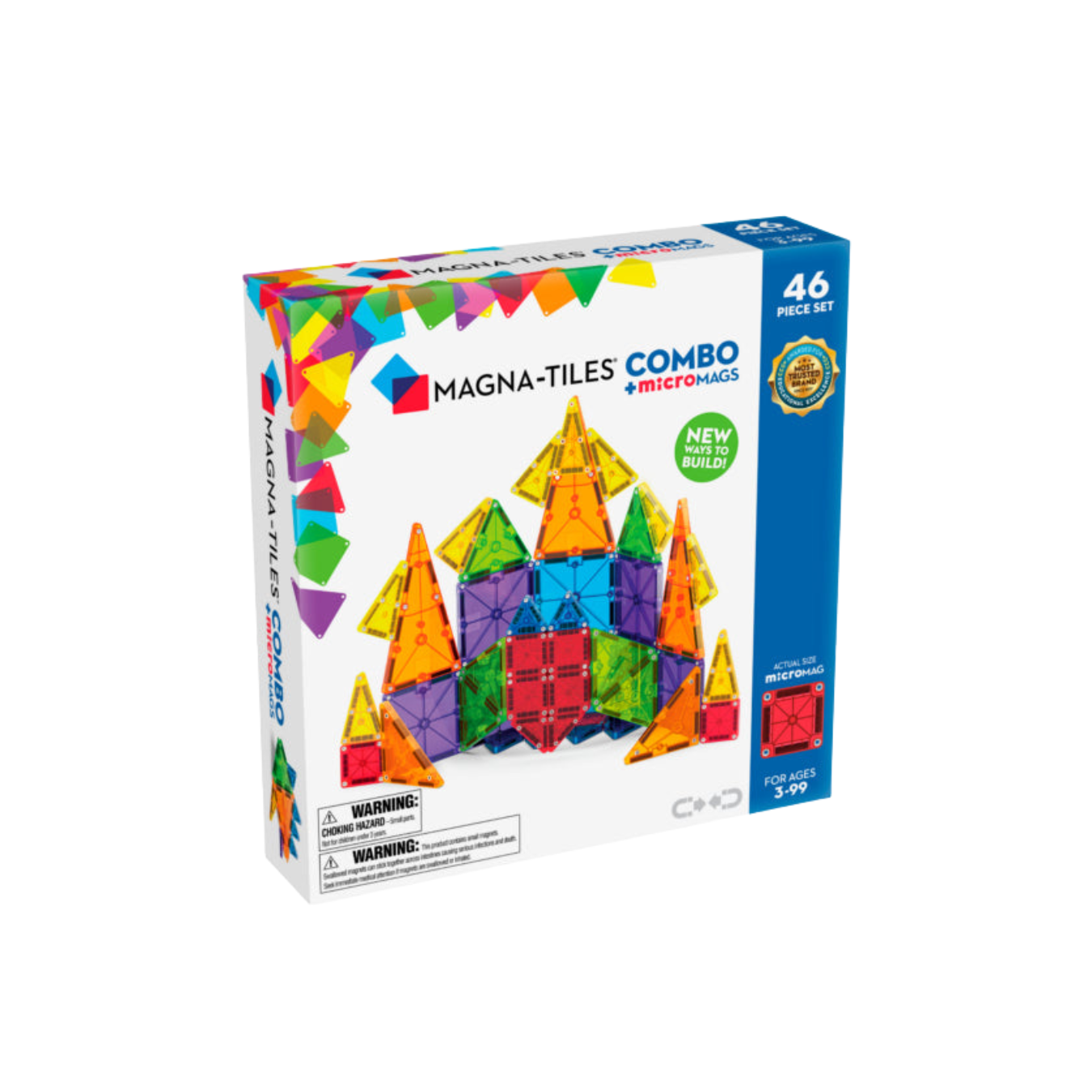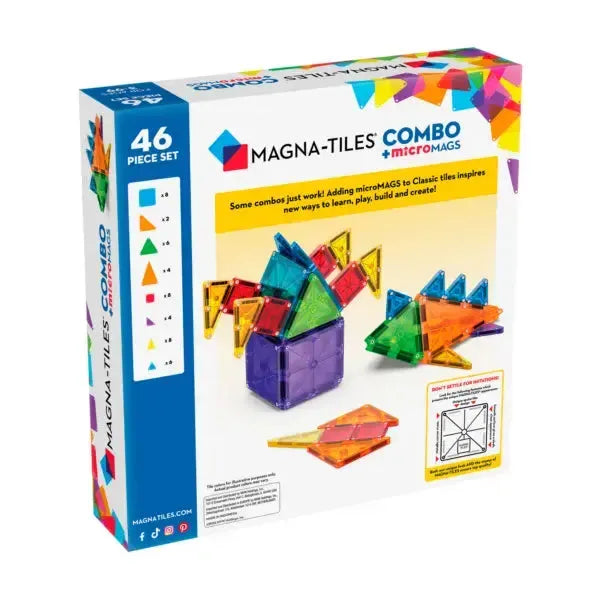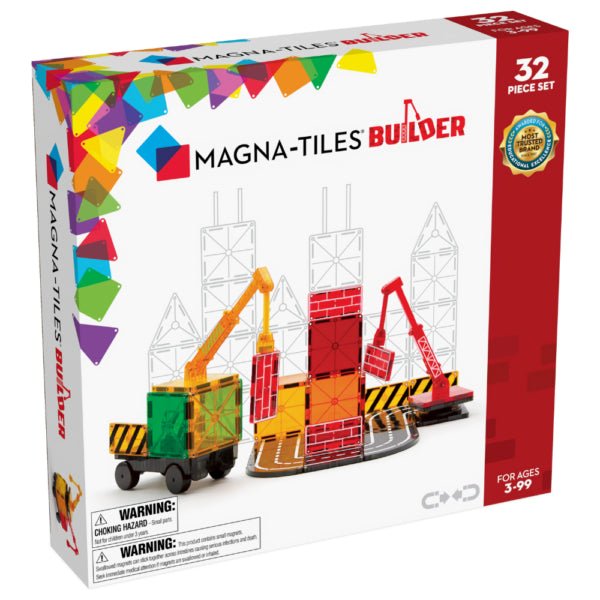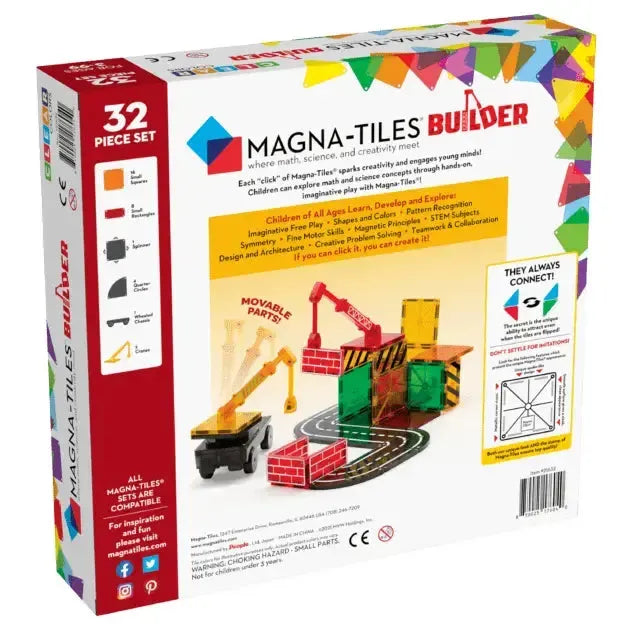Magna-Tiles – STEM Learning Toys for Kids
12 products
Showing 1 - 12 of 12 products
Shop Magna-Tiles® magnetic building toys. Educational, safe, and perfect for hands-on learning and creative play for toddlers and kids.
sets for STEM education, creativity, and screen-free play. Ideal for home or classroom use.
Recommended Age Range for Magnetic Tiles
Even younger siblings, who are on the move and curious about everything, can begin interacting with magnetic tiles under supervision once they start crawling. Over time, you’ll notice their skills develop—from testing magnetic connections to confidently adding and removing pieces from larger builds, all without toppling the structure.
Whether you have one child or an energetic crew,
Age Recommendations for Magna-Tiles
For younger toddlers—those around 6 months who are crawling and eager to grab—these tiles can spark early curiosity. However, since the sets contain small parts and very strong magnets, adult supervision is important for any child under 3 years, to ensure safe play as children explore and learn.
As for independent play and more complex building, most children begin to build simple structures around age 2. With time and practice, their skills naturally evolve, leading to more elaborate creations as they grow.
In summary:
- Introductory play: 18 months and up, always supervise young toddlers
- Independent building: Typically blossoms around 2 years
- Continued challenge: Endless possibilities for preschoolers and beyond
Can a 2-Year-Old Build With Magnetic Tiles?
Absolutely! Even at age two, little hands can snap together magnetic tiles and start building. While their first creations might be simple towers or colorful stacks, these early experiments are all part of the fun—and learning. As children become more familiar with how the magnets work, you'll see their confidence and creativity blossom.
With time, those simple builds grow into imaginative houses, shapes, and structures. The open-ended play means there’s no “right” way, just endless possibilities for exploration. Plus, the large pieces and satisfying “click” of
Let your little one explore at their own pace—you might be surprised at what they dream up next!
How Many Pieces Should You Get?
When it comes to building with
If you’re shopping for siblings or enjoy hosting playdates, consider getting even more. Extra tiles mean more collaboration, taller towers, and no waiting turns for that last square or triangle. And remember, as kids grow, so does their imagination—having a generous supply will keep up with their expanding ideas.
A great starting point is one of the larger sets, but mixing and matching as you go is also a fun way to build your collection.
Are Magnetic Tiles Worth the Investment for Your Family?
When deciding whether magnetic tiles deserve a place in your home or classroom, there are a few important considerations to keep in mind:
- Educational Value: Look for sets that encourage STEM learning and support shape recognition, spatial reasoning, and fine motor skills. The best options foster open-ended play and offer endless opportunities for creativity.
-
Safety and Durability: Safety is always a top priority—choose brands like
Magna-Tiles® ,PicassoTiles , andPlaymags known for their quality materials, smooth edges, and secure magnets. Durable tiles are built to withstand years of enthusiastic play (and the occasional tumble). - Age Appropriateness: Ensure the recommended age range meets your child's needs. While most magnetic tiles are perfect for toddlers and young children, some sets have smaller pieces best reserved for older kids.
- Versatility: Magnetic tiles seamlessly blend play and learning, whether used solo or as a group activity. They're equally enjoyable at home or in the classroom and pack away easily for quick storage.
- Screen-Free Fun: If you're searching for engaging alternatives to screen time, magnetic tiles provide hours of hands-on entertainment that grow alongside your child's imagination.
All in all, investing in magnetic building tiles can provide long-term educational benefits, endless creative exploration, and (bonus!) fun for both kids and adults alike.
How Do Magnetic Tiles Compare to Wooden Blocks and LEGO ?
If your toy collection already boasts classic wooden blocks and a stash of
Why Magnetic Tiles Stand Out
While wooden blocks and
-
Easy for Little Hands: Magnetic tiles connect and disconnect with minimal effort, making them accessible for younger children who may not have mastered the fine motor skills needed for snapping
LEGO pieces together or balancing wobbly block towers. - Sturdy Creations: The magnetic connections help structures stay intact during play—no more accidental toppling from a misplaced block or a jostled table.
- Versatility Beyond Building: Kids naturally explore colors, shapes, and even experiment with light and shadows as sunlight passes through the translucent pieces. Magnetic tiles also offer hands-on lessons in magnetism, turning everyday play into subtle STEM exploration.
Perfect For Collaborative Play
Because they’re so simple to use, magnetic tiles invite group play, whether at home or in the classroom. Children of different ages can easily join in, sparking teamwork and shared discoveries.
In Short
Magnetic tiles don’t replace wooden blocks or
Are Magna-Tiles Fun for Kids Who Already Love LEGO and Duplo ?
Absolutely! If your 6- or 8-year-old is already building imaginative worlds with
Here’s why magnetic tiles remain a smart and exciting pick as your kids grow:
-
Open-Ended Play: Unlike sets with prescribed instructions,
Magna-Tiles ® spur creativity through free-form construction. From crazy castles and color-block robots to geometric patterns, what they build is always up to them. -
STEM Enrichment:
Magna-Tiles ® spark curiosity about geometry, symmetry, and magnetism, making them an engaging supplement to classroom learning. - Teamwork & Social Skills: Their quick-build nature encourages siblings, parents, and friends to join in, supporting collaboration and shared problem-solving.
- Long-Term Engagement: Magnetic tiles don’t have an “age out” factor like some toys—older kids enjoy engineering complex structures while younger siblings can easily join in.
Many families find that
Browse our selection below to find the perfect set for your next creative adventure.
Are Magnetic Tiles Worthwhile If You Already Own Building Toys?
Absolutely. While wooden blocks and
For instance, the ease of connecting and separating magnetic tiles makes them ideal for young builders who may not yet have the fine motor skills required for
But the benefits go beyond construction. Magnetic tiles invite children to experiment with color, create patterns that play with light and shadow against a sunny window, and explore the basic science behind magnetism—all through hands-on play. This versatility helps keep the experience fresh and engaging, even for kids who have already logged plenty of hours with other building toys.
In short, even with a collection of blocks and
Why Include Magnetic Tiles in Your Child’s Playroom?
Adding magnetic tiles to your child’s playroom is more than just introducing another toy—it’s an investment in hands-on discovery and imagination. These versatile sets, popular among parents and educators alike, offer countless opportunities for children to build, experiment, and problem-solve.
Whether used for solo play or group projects, magnetic tiles support crucial early learning skills:
- STEM exploration: Kids naturally practice science, math, and engineering concepts while stacking, connecting, and creating new shapes.
- Open-ended creativity: There’s no single “right” way to play, allowing children to invent their own structures, vehicles, animals, and more.
- Screen-free fun: Magnetic tiles spark hours of independent play, turning downtime into a chance for skill-building.
From classrooms to living rooms, these sets have earned their place as a must-have for busy hands and curious minds. If you’re searching for a toy that grows with your child, encourages exploration, and keeps play fresh and engaging, magnetic building tiles are hard to beat.
Absolutely—it’s perfectly normal for toddlers and young children to be more interested in knocking down
Toddlers are exploring cause and effect, testing how things fit together—and come apart! Smashing a tower or pulling apart tiles is a vital part of their cognitive and physical development. Each “crash” helps them understand the forces at play and sharpens those all-important fine motor skills.
How to Encourage Healthy Play
If you notice your child gravitating toward deconstruction, don’t worry. Here are a few tips for nurturing their budding builder (and demolisher!) instincts:
- Build simple towers together and invite your child to knock them down—turning it into a shared game.
- Offer encouragement and describe what’s happening: “Wow, you made it fall! Let’s try again.”
- As they get older and gain more control, gently introduce opportunities for them to stack or arrange tiles with you.
Remember, it’s all about exploration at this age, whether pieces are being connected or gleefully scattered. Celebrate the process—and the giggles—as your child learns through play.
Are Magnetic Tiles from Different Brands Compatible?
Wondering if you can mix and match your magnetic tile sets? Good news—many popular brands like
Mixing brands is a great way to expand your child’s collection—whether you’re building at home or adding extra fun to the classroom. Just start connecting, and watch the ideas take shape!
Comparing Magnet Size and Strength
When exploring the differences between
But it's not just about how big the magnets are—strength matters, too.
In short, if you're looking for magnetic tiles with robust connections and bigger magnets for those gravity-defying creations,
Seasonal Build Inspiration
Looking for fresh ways to use your magnetic tiles throughout the year? Try creating fun, seasonal builds to celebrate spring or fall with your kids. For spring, design colorful gardens with flowers, butterflies, or even a miniature pond scene—great for sparking conversations about nature’s renewal. When autumn rolls around, switch things up by building pumpkins, friendly forest animals, or a cozy fall cabin to capture the magic of the season. These themed projects not only nurture creativity but also keep learning playful and relevant all year long.
Enhance Play with Activity Cards
Incorporating activity cards, like animal, alphabet, or number cards from trusted brands such as Learning Resources or M & D, opens up new ways for kids to explore with magnetic tiles. Kids can match tiles to images or letters, build animals from visual prompts, or construct structures that pair with different numbers or words. This simple addition encourages hands-on sorting, storytelling, and counting.
Activity cards transform building sessions into interactive lessons—perfect for developing early reading skills, boosting number recognition, or sparking imaginative play. Whether your child is practicing letter sounds, identifying animals, or arranging tiles in creative patterns, cards add a playful nudge for learning through building.
Educational Add-Ons for Magnetic Tile Learning
Looking for ways to build early literacy and numeracy skills? In addition to classic magnetic building sets, there are plenty of educational resources designed to enhance play. Consider adding alphabet and number cards to your collection—these are excellent for introducing letters, simple words, counting, and even basic math. Options from popular brands like Melissa & Doug and Learning Resources offer durable, kid-friendly cards and magnetic accessories that pair seamlessly with existing tiles.
These extras make it easy to reinforce key classroom concepts right at home. Alphabet cards help little ones practice letter recognition, phonics, and early spelling, while number cards encourage counting, sorting, and math games. Simply set them alongside your magnetic tiles to create colorful words, pattern sequences, or mini math challenges—no screens required.
